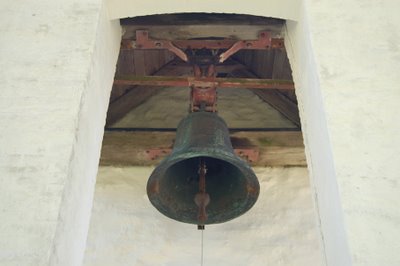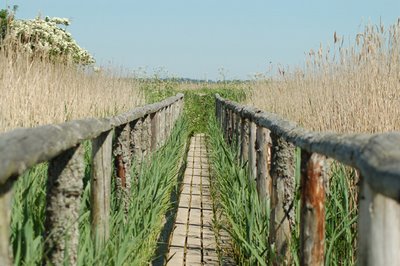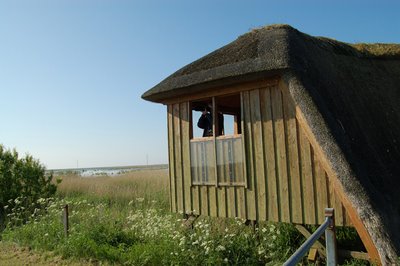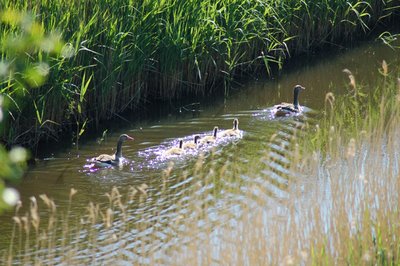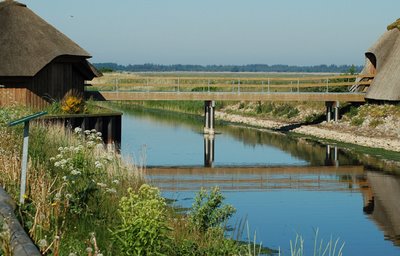 Rowan Tree/Almindelig Røn
Rowan Tree/Almindelig Røn
Sorbus aucupariaThe rowan tree grows in forests, gardens and parks. Orange or red berries that grow in large clusters are hard, and they ripen between August and October. They hold three times as much C-vitamin as orange. The berries are edible, but very tart in flavour. Freezing causes the bittertart berries to turn sweeter, one may also put them in a freezer for 12 hours before processing them. NB: The berries contain a damaging substance which at worst can be harmful to the kidneys, - so it is advisable to heat-treat or freeze them before use.
Old Norse name: reynir, familiar to the name red, possibly to Samic raudna or rune = a secret magical sign, since rowan wood was used for runic sticks and the tree was put down to several
supernatural powers.
 Use of wood, barch, leaves and fruits
Use of wood, barch, leaves and fruits:
1)From the Ertebølle-culture (ab. 5000-3000 BC) was in Ordrup mose at Copenhagen found a small cup carved in rowan wood; 2) sticks of rowan stuck through the eyes of bronze vessels from Bronze Age; 3) rowan wood was a part of a bridle from the 1200s.
The 1800s: the wood of rowan was used for planks, wheel spokes, pipe stems and fuel, the barch and the young branches for tanning etc. After 1900s: the wood from rowan used by coach builders, joiners, turners and carvers, the Swedish Whitebeam was said to be the best for pins, balls, drawing-tools and rules, furthermore for hammer-handles and spirits-barrels.
Dyeing:The barch dye red brown, and grey with vitriol.
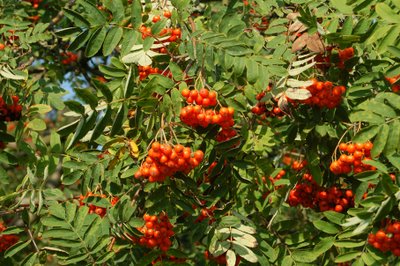 Food and Spirits before and now:
Food and Spirits before and now:Rowanberries were used for snaps; a small factory at Langeland produced in the beginning of the 1800s rowan aquavit. From the fruit were made vinegar. A rowan jelly was mostly served for venison at the manor houses, common people did not like the pungent taste. Some house wives put a cluster of rowan berry in the preserved cucumbers, a little cooked juice in stewed apples , the berries were during WWI gathered for marmalade and for export, some were sold at the pharmacies. The name Bornholmske rosiner (raisins from Bornholm) was a name for the fruits of Whitebeam and Swedish Whitebeam, known from 1688 when the farmers' wives used them in black puddings and Christmas cakes as a substitute for raisins. During WWII the berries were dried and cooked into raisins.
Today many like the rowanberry jelly or the berries preserved in sugar and vinegar - especially for venison, the dried berries can be used as a spice in venison-sauce and fruit-soup, the juice a fine spice in liqueurs and in preserved pumpkins, stewed fruit etc.The berries make an excellent jelly because of the high amount of pectin. Rowanberry jelly with cognac is the traditional accompaniment to venison and is also excellent with game and fowl. The berries can be used to make purés and juices, or they can be dehydrated and ground into powder to be mixed in porridges or bread doughs.
 Decoration:
Decoration:The bright red fruit clusters were a decoration for garlands and chandeliers at harvest feasts (in the 1800s) and for funeral garlands; berries and leaves were often used as a table decoration in festivities, i.e. hunting dinners.
Livestock: Leaves, barch, young branches and fruits gave a good fodder for the livestock; dried berries softened in water for the chicken; turkeys could be fed up with rowan berry; dried rowan berry was a good winter fodder for birds. In the 1700s: when people planted rowan in their gardens it was mostly in order to lure
kramsfugle (little birds) to the berries and catch them in snares. It was later forbidden by law.
Folk Medicine:The juice of the berries were used against diarrhoea, stomach ache and dysentery. Wild Service Tree or Sorbus torminalis: the fruits were traditionally known as a herbal remedy for colic, the tree's Latin name,
torminalis means 'good for colic'. The pulverized barch was used against malaria. Children with scrofula were rubbed with the berries; an extract from spirits was an ancient means against rheumatism; a special means against rheumatism was to eat raw rowan berries, one berry the first day, two the next until twenty, then counting down to one. The leaves, barch and berries were also used in various medicine for the farmer's livestock.
Against vermins and fire in corn:A piece of rowan wood in the corn-heap drove vermins away. Between the corn layers were placed fresh rowan branches against rats and mice; the vermins could be driven away from the house in the same way. - At Lolland people put chips of rowan wood in the seed corn before it was sowed in order to prevent fire.
 Acainst witchcraft and other superstition:
Acainst witchcraft and other superstition:The rowan tree was probably already in ancient times ascribed to magical powers. The superstition especially paid attention to the "flying rowan", a small bush grown from seeds in wall cracks. In a Bronze Age grave from 1300-1100 BC in Maglehøj at Frederikssund was found a box with a rowan sprig. The cross of Christ was from this tree; therefore a tool from rowan cannot be bewitched, the tree is holy and prevents all evil. The flying rowan never touches the ground, and therefore witches had no power over it. If people used rowan wood as a fuel there would be unluck in the livestocks. If they found a flying rowan far from the city they had to plant it in their garden for luck. In Midsummer's Night let a twig hang under the ceiling, this brings luck to the house. Still in 1930 rowan was planted by the farm gate in order to secure happiness.
If people had a twig of flying rowan in their pocket it gave luck in trade, placed under the doorstep of the stable luck to the cattle, sticks of rowan carved on Midsummer's Night were sold by wise people as an amulet guarding against withcraft, a piece of rowan sewed into the shirt guarded against evil eyes. On Midsummer's Day people put rowan sprigs above all doors, gates, windows and upon tools and wagons against witches, who did not like the smell and thus were prevented from riding away on the farm horses. When the cows were driven home on the evening on the 1. of May they were decorated with rowan sprigs. Twigs were placed in the doorstep of the stable, and when repairing old houses twigs of flying rowan have often been found. In a legend from West Jutland two red calves are bound together with rowan twigs in order to prevent the merman from taking them with him to the North Sea; and when the cattle in summer were driven out on the fields, they were bound together two and two with rowan, and witches and trolls could not harm them.

The dead did not haunt the house, if the coffin was closed with rowan nails. Rowan twigs were used when exorcising ghosts in Himmerland; a wise woman sold, against haunting, bags with earth from the church yard. A cross of rowan above the bed prevented the sleeping from being murdered in the night. Wise people let patients with a disease, given them by witches, creep naked three times through a bend rowan branch or a garland of rowan branches. A tooth ache could be transferred to the tree. A twig, cut from a flying rowan on an evening in May, cured sores just stroking over the wound. Flying rowan in general had healing powers. But witches could also misuse the rowan, and that's why some people did not want a rowan tree on their ground. If people slept with a rowan twig in their bed, they were told a lucky lottery number; rowan crosses placed under the beehive in autumn bind the bees to the place. It was not advisable to graft apple upon rowan.
Omens:
Many rowan berries are a sign of a large rye harvest; if the rowan berry is red, the rye is good for bread; many rowan berries are a sign of a hard winter.
Proverb:
"They are sour sad the fox about the rowan berries, he couldn't reach them". This proverb is known in Denmark from 1682 and is a re-write from Æsop about the fox who could not reach the grapes.
Source: Folk og flora, Dansk Etnobotanik 3, V.J. Brøndegaard 1979.  Making snaps
Making snaps:
Use ripe rowanberries after frost. Put the berries in a glass or jar, 2/3 berries, fill up with alcohol. Drawing time ab. 6 weeks, now the essence has a fine red colour, after filtration the snaps is ready and can be thinned as you like but it grows better in storing.
Added honey and vanillla makes it a liqueur.
photo ⓒ 2006/2008/2009: grethe bachmann




